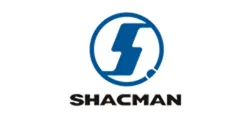digger loader
The Evolution of Digger Loaders A Versatile Tool in Construction
In the realm of heavy machinery, few machines exhibit the versatile capabilities of the digger loader. These powerful vehicles, blending the functionalities of both a backhoe and a loader, have become indispensable in construction, agriculture, and various other industries. Their design and functionality have evolved significantly since their inception, adapting to the ever-changing needs of construction professionals.
A Brief History
The digger loader's roots trace back to the early 20th century, with the first loaders appearing in the 1920s. As construction demands grew, so did the necessity for more multipurpose equipment. The concept of combining a digging arm and a front-mounted loader bucket emerged, leading to the creation of the modern digger loader. This innovative machinery allowed for more efficient work processes on job sites, dramatically reducing labor costs and time.
Design and Features
Today’s digger loaders are engineered for efficiency and flexibility. A traditional digger loader features a front loader bucket for lifting and moving materials and a rear-mounted backhoe for digging trenches and holes. These machines typically have powerful engines and advanced hydraulic systems enabling them to perform multiple tasks with ease.
Modern advances in technology, such as GPS and telematics, have further enhanced the functionality of digger loaders
. Operators can now track the machine’s performance in real-time, ensuring optimal fuel efficiency and maintenance schedules. Additionally, many models offer an array of attachments, such as augers, grapples, and forks, which allow operators to customize the machine for various tasks, from moving dirt to lifting heavy objects.Applications in the Field
Digger loaders are uniquely positioned to handle a plethora of tasks in various industries. In construction, they are often used for site preparation, material handling, and foundation work. Their ability to perform both digging and loading tasks means they can streamline project workflows, resulting in significant time savings.
digger loader

In agriculture, these machines are invaluable for digging drainage ditches, loading feed, or moving soil. Their adaptability ensures that they meet the diverse demands of the agricultural sector. Additionally, municipalities utilize digger loaders for road maintenance, landscaping, and utility work, highlighting their importance in maintaining infrastructure.
Advantages and Limitations
One of the primary advantages of digger loaders is their versatility. They can replace several pieces of machinery on a job site, reducing the need for multiple operators and machines. Their compact size also allows them to work in tight spaces that larger equipment cannot access.
However, digger loaders do have limitations. While they are excellent for light to medium-duty tasks, they may struggle with heavy-duty excavation compared to larger excavators. Their dual functionality can also mean that they do not perform specialized tasks as efficiently as dedicated machinery.
Future Trends
As technology continues to advance, the future of digger loaders looks promising. The integration of electric and hybrid models may become more prevalent, aimed at reducing emissions and operational costs. Additionally, autonomous and semi-autonomous features are likely to gain traction, optimizing performance and safety on job sites.
Conclusion
In summary, the digger loader stands out as a versatile and essential piece of equipment in the construction and agricultural industries. Its evolution reflects the changing needs of these sectors, demonstrating adaptability, efficiency, and functionality. As technology progresses, the digger loader will undoubtedly continue to evolve, cementing its place as a cornerstone of modern machinery. This adaptability ensures that they will remain a critical component in the toolkit of construction professionals for many years to come.
-
SINOTRUK HOWO 84 Electric Dump Truck for Eco-Friendly Heavy HaulingNewsJul.26,2025
-
The Fast 16-Gear Manual Transmission Assembly for Heavy TrucksNewsJul.25,2025
-
Mercedes Benz Actros 1848 42 Tractor Truck for Sale - Reliable PerformanceNewsJul.24,2025
-
High-Quality Water Pump Assembly for Sinotruk Trucks – Durable & ReliableNewsJul.23,2025
-
Premium Truck Engine Antifreeze Coolant Fluid for Heavy Duty VehiclesNewsJul.22,2025
-
FOTON View G7 Mini Bus: Affordable & Spacious TransportNewsJul.22,2025
Popular products

























